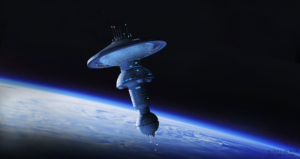

Heatstroke
Space weather, and yes, there is weather in space, is both cruel and unforgiving. With temperatures that range from nearly three hundred degrees below zero in the shade, to well over two hundred degrees in the sunlight, it is easy to see just why the right space fashion is so important.

Spacesuits
A spacesuit is often times the only thing that stands between an astronaut and the harsh environment of space. It is a very complex machine, often compared to a miniature spaceship in and of itself. While it doesn’t carry its own fuel supply, it does contain tons of insulation and an elaborate cooling system that keeps an astronauts’ body within the limits conducive to continued life.
Now, the insulation of the suit isn’t going to go anywhere, so astronauts rarely have to worry about getting cold. On the other hand, if the cooling system should break, that’s an entirely different ball of wax.
Hot Stuff
So just how does an astronaut get heatstroke while in the protective confines of his spacesuit?
In 1966, astronaut Gene Cernan attempted what few men before him had; an EVA (Extra Vehicular Activity) in space. While he had the same tools as his predecessors, he had a different job. Cernan was tasked with actually working while he completed his three hour spacewalk. Given a list of tests to complete, Gene went out and made a valiant attempt, but in the end, he found himself heating up faster than the suit could cool him off.


On the ground, NASA doctors were watching as his heart rate spiked to well over the normal range, eventually hitting nearly two hundred beats per minute. He reported that his faceplate fogged up, and as a result, he was left blind in space. NASA officials called off the EVA and brought Cernan back into the spacecraft. And it was a good thing too; had he stayed out much longer, he would have fallen unconscious and died.
Ironically, he would live on to give his astronaut buddy a moon dust fever during Apollo 17 in 1972.
It Doesn’t Take Much
Perhaps the scariest part of this whole story is the fact that it doesn’t take a broken suit to finalize the future of an astronaut. Though engineers thought they had fixed the problem following Cernan’s flight by putting in a water cooled system into space suits, they didn’t realize just how sensitive they were. So when Cosmonaut Alexander Kaleri began to suffer from the same symptoms over forty years later, it raised many questions.
In the end, it was discovered that a single bent tube in his spacesuit was responsible for what could have been his last day, showing engineers and astronauts alike that space travel is all about the details. Sure, spacesuits work, but there really is no room for error.

















